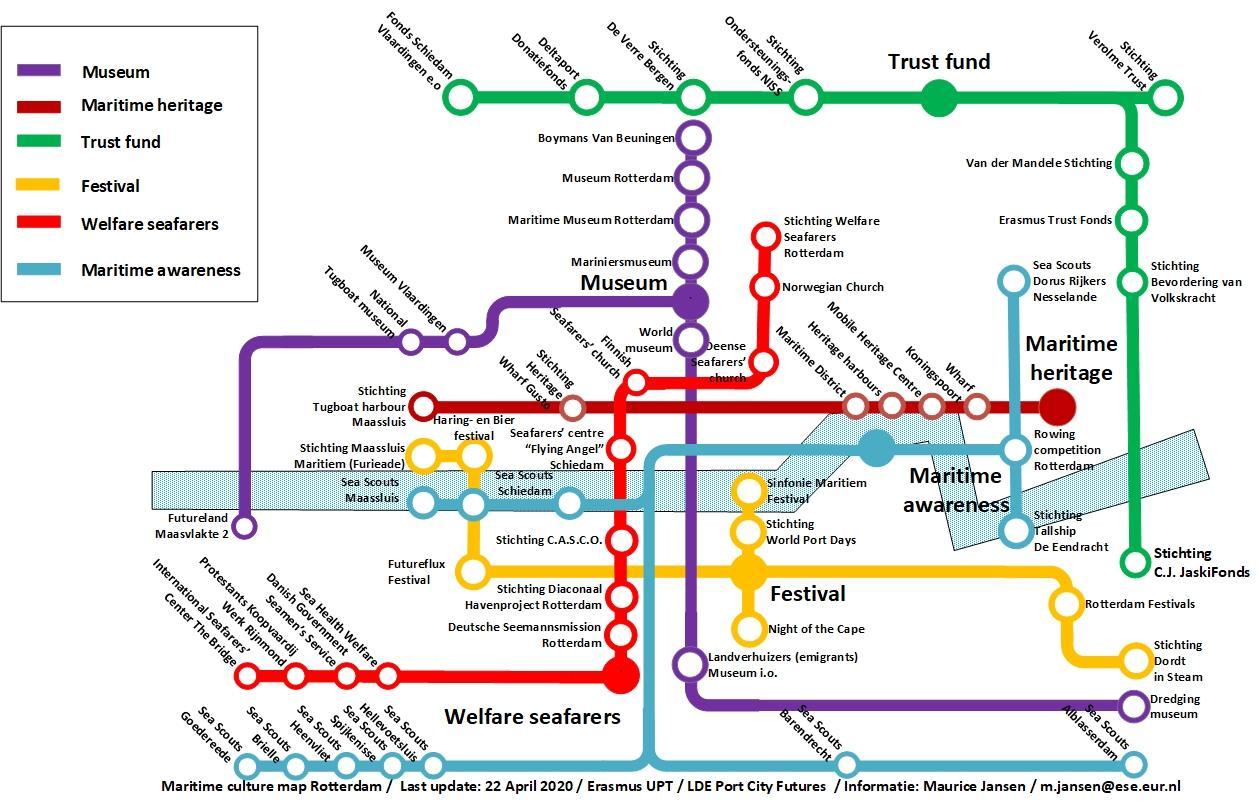Maurice Jansen
Rotterdam-Zuid, a district that has grown near and along with the port of Rotterdam on the South side of the River Maas, is lacking behind in terms of economic growth and prosperity compared to the city district on the North bank. In terms of unemployment, income levels, education performance, and value of real estate, Rotterdam-Zuid performs worse on key performance indicators than Rotterdam as a whole and scores lowest compared to Amsterdam, The Hague and Utrecht, the three other major cities in The Netherlands[1]. For years, a national pact of institutional stakeholders have made considerable efforts to improve this urban area and make it more livable and attractive. South is slowly but surely catching up, but arguably as a function of the development of the North (EVR 2020). The river is not just a physical barrier, there are also institutional barriers. What can the port city of Rotterdam do to involve ‘South’ and to realize its ambition for an inclusive and productive city? Does the South need a Guggenheim effect – a major overhaul through large investments in culture, such as done in Bilbao with the Guggenheim Museum – to incentivize larger urban redevelopments?

Port cities around the world are demonstrating the potential of port culture and identity, which can play an important role in the revitalization of post-industrial areas. Promoting and capitalizing on a specific culture and identity of port cities, allows residents to develop a sense of pride and flourish, according to AIVP. Many waterfronts around the world stand exemplary for interventions in culture rich cityscapes. Hamburg’s HafenCity project is perhaps among the most successful multifunctional interventions with the Opera House, the Maritime Museum, and HafenCity and Kuehne Logistics University. A pitfall in any of these interventions is gentrification, and the displacement of the original population. Rotterdam-Zuid has the potential to follow a different route. It has a chance to develop the local ‘cultural capital’ as coined by Bourdieu[2]. Cultural capital manifests itself in 3 ways: in the body and mind of a person (‘Stronger through Stride’), the objectified form of status - photos, paintings, books, instruments, machines, etc.) and in institutionalized forms, where culture is widely recognized or confirmed, for example, a scientific institution or publication. The personification of culture can be widespread, as evidenced in a maritime mindset. It can also be linked to business interests, and the concept of human capital or human resources (Jansen, 2019). Together these aspects of culture are intimately linked to the resilience of port citizens and communities (Hein, 2020). Cultural capital intrinsically represent value, but the perception of stakeholders plays an important role in their motivation to protect, conserve and convert the (latent) available cultural capital into sustained value.
In Rotterdam Zuid the connection to culture, both in terms of a linkage to the maritime mindset of Rotterdam as a port city at large, or in terms of looking at the maritime industry as an employer seems to be absent. In fact, when we explore Rotterdam South’s cultural connection with the port, we are observing a blank spot on the map when it comes to cultural institutes. As shown in this map (2020), most cultural institutions, events, welfare organizations and maritime heritage sites are located on the north bank of the river, not on the south. Rotterdam-South seems to have missed this connection with the port, despite it having been home to dock and shipyard workers for a long time. What is less visible in Feyenoord and IJsselmonde is the long history in shipbuilding. What is now planned to be Feyenoord City used to be a shipyard where numerous ships were built. There is a great opportunity to empower locals using the maritime mindset of the port city. In these neighborhoods thousands of young people look for inspiration, for role models, for a stepping stone. What Rotterdam can learn from Bilbao’s Guggenheim effect is the holistic perspective on waterfront development on the one hand with strong institutional anchors through culture and education on the other. Sports is one way for inspiration, but establishing a science campus with universities, (maritime) technical vocational education, perhaps even a maritime cultural corridor offers youngsters a wider range of career opportunities and connects better with the maritime DNA of Rotterdam as a whole.
Acknowledgement
This blog has been written in the context of discussions in the LDE PortCItyFutures research community. It reflects the evolving thoughts of the authors and expresses the discussions between researchers on the socio-economic, spatial and cultural questions surrounding port city relationships. Special thanks to Carola Hein for her comments and reviews.
References
[1] Key indicators for employment, education qualifications, disposable income and value of houses show Rotterdam-Zuid is underperforming compared to the rest of Rotterdam, as well as in comparison with Utrecht, Amsterdam and The Hague. More information in Progress Report 2018, Nationaal Programma Rotterdam-Zuid.
[2] Bourdieu, P. (1986). The forms of capital. In J. (. Richardson, Handbook of Theory and Research for the Sociology of Education (pp. 241-258). New York, Greenwood.
